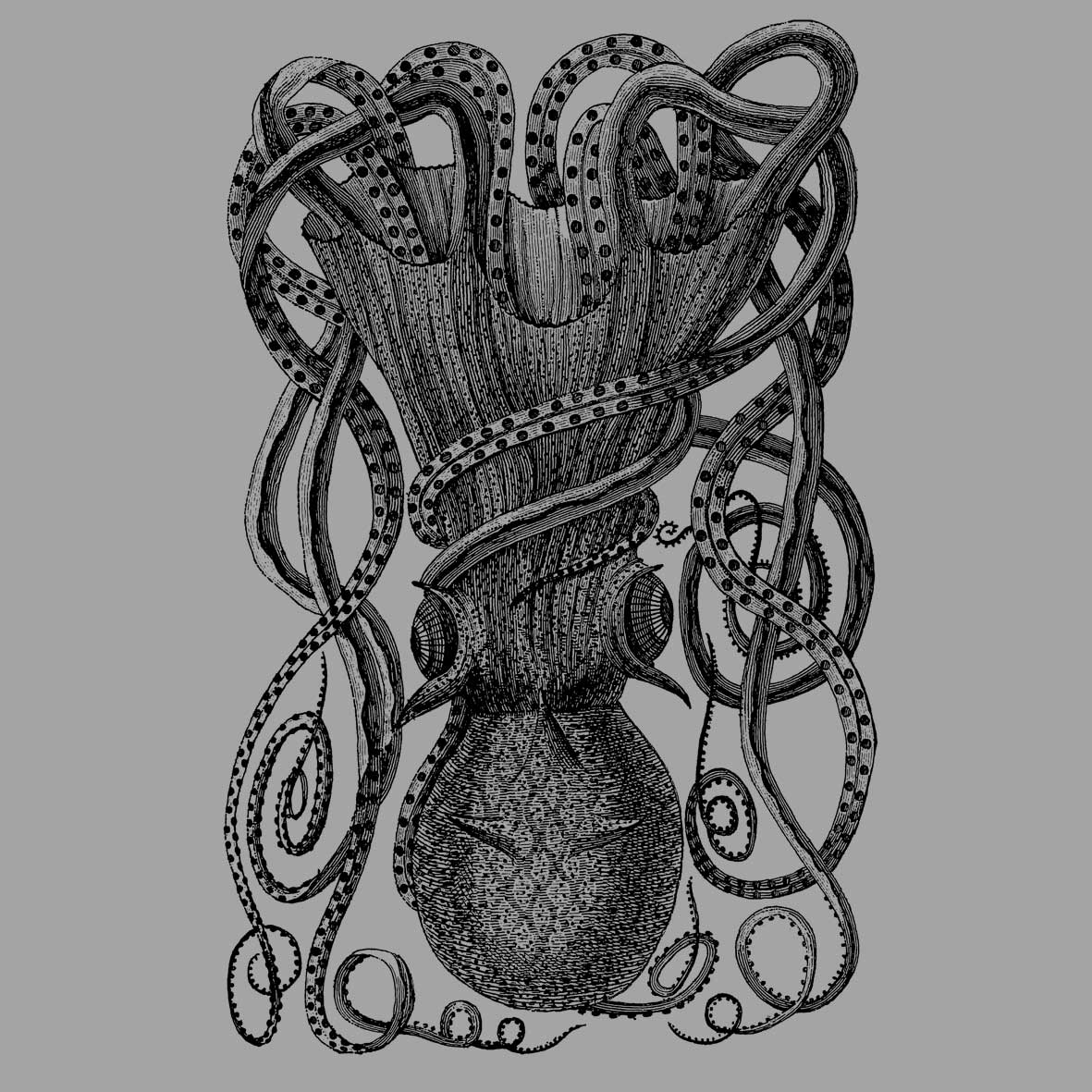Fascinating Secrets of Water Dwelling Creatures
Oceans and waterways are mysterious places, filled with all sorts of interesting creatures. Today, we'll talk about five fascinating species who live under water: The Spiny Dogfish, the Porcupinefish, the Electric Catfish and the Octopus. We've also selected some beautiful illustrations from our pictorial archive, Sea-Life & Monsters of the Deep, to capture your imagination!
Why is the Population of the Spiny Dogfish Threatened?
The spiny dogfish, also known as the piked dogfish, is a small brown or grey shark that lives in temperate and subarctic waters in the Pacific and Atlantic oceans. They are easily recognisable due to their small, slim size and two distinct spines on their back. These spines are equipped with mild venom to help protect the shark from attacks by predators. If attacked, the shark can arch its back and use its spines to puncture the attacker and transmit the venom.
They are small in size, with the males reaching 60–65 cm in length and females growing to 80–84 cm (30–30 in). The average lifespan is around 30–40 years, but some can live between 50 and 70 years. The spiny dogfish can hunt in packs of up to a thousand others and feeds on squid, fish, crab, jellyfish, sea cucumber, shrimp and other invertebrates.
The spiny dogfish species is classified as 'vulnerable' globally and 'critically endangered' in the Northeast Atlantic due to overfishing for human consumption. It is sold under various names in Europe, including huss, rock salmon, saumonette, galéos, eepaling and Seeaal. It is also used in Chinese cooking as an alternative ingredient for shark fin soup.
Before overfishing, the spiny dogfish had the world's largest population of all shark species. The spiny dogfish population takes a long time to recover because it takes ten years for males to reach sexual maturity and 16 years for females. They give birth to an average of six pups and have a gestation period of two years, and the longest of any vertebrate.
How Does A Porcupinefish Defend Itself From Predators?
Porcupinefish belong to the family Diodontidae, which includes blowfish, balloonfish, and globefish. They live in shallow temperate and tropical seas worldwide, but a few species live far away from shore.
Porcupinefish have two unique features to defend themselves from predators. They have sharp spines (modified scales) all over their body which serves as a deterrent for smaller predators, but they can also inflate themselves by swallowing water or air. This act doubles their original vertical size and makes their spikes stand out, protecting them from larger predators (though they can still be prey for orcas and sharks).
Some species of porcupinefish have a poisonous tetrodotoxin in their internal organs. This neurotoxin is produced by bacteria obtained from the fish's diet and is at least 1200 times more potent than cyanide!
Charles Darwin noted that when porcupinefish inflate, they swim upside down. He also shared the experiences of another naturalist, Dr Allen of Forres, who had "frequently found a Diodon (Diodontidae), floating alive and distended, in the stomach of the shark; and that on several occasions he has known it eat its way, not only through the coats of the stomach but through the sides of the monster."
How Can An Electric Catfish Soothe Arthritic Pain?
The electric catfish (Malapteruridae) is an interesting freshwater fish living in tropical areas of Africa and the Nile River. It has a unique ability to produce an electrical discharge of up to 350 volts. These nocturnal fish are carnivorous; some species feed on other fish by stunning them with their electric shock. Other species are bottom foragers, preferring to eat invertebrates, fish eggs, and detritus (decomposing organic material). These brown or grey fish can grow up to 1.2 meters (3ft) long, weigh up to 23kg, and consume prey up to half their size!
The primary defence mechanism of the electric catfish is its electrical discharge. When threatened by a predator, it will emit a powerful shock that can stun its attacker for a few seconds allowing it to escape quickly.
The Ancient Egyptians used small electric catfish for medical treatments. They believed that these electrical shocks could cure ailments such as arthritis, and the first known depiction of an electric catfish is on a slate palette dating from 3100 BC. (Read about Electrical Nerve Stimulation for Arthritis Pain)
What Makes The Octopus So Special?
The octopus is a fantastic creature capable of fascinating behaviours and abilities that set it apart from other species. They are extremely intelligent and can solve complicated problems, including getting out of containers, using tools and solving puzzles. Read more about the intelligence of octopuses at the Natural History Museum, which includes a fascinating detail about the hunting habits of the Pacific striped octopus. It chooses its prey, such as a shrimp, and gives it a tap. The surprised prey attempts to scurry away from the arm that touched it... straight into one of the octopuses' seven other arms.
An octopus has three hearts; two to pump blood to the gills and one that pumps blood around its body. Like most animals, the octopus has blue blood instead of red because they use copper instead of iron for oxygen transport, which is better for life in cold and low-oxygen environments.
Octopuses have tiny suction cups on the underside of each tentacle, which they use for gripping and holding onto surfaces. These suction cups are known as suckers and are essential to the octopus. The number of suckers an octopus has depends on its size and species, but the Giant Pacific Octopus can have up to 2,240 suckers! Each sucker has a flexible outer ring that helps the sucker stick to any surface by forming a watertight seal and an inner pad with rigid walls that contract when pressure is applied to help keep the sucker attached. Suckers help the octopus catch prey, navigate its surroundings and taste! (Read more here)
Interested in Learning More?
|
The images are available to download in JPG format at a resolution of 300 DPI, perfect for fine artists, illustrators, graphic designers and tattoo artists. This treasury of 19th and 18th-century engravings of aquatic life features ferocious sharks, giant squid attacking ships, octopi, rays, and a wide variety of fish, including deep-sea and tropical fish, whales, dolphins, crustaceans, corals, shells and more.
|









